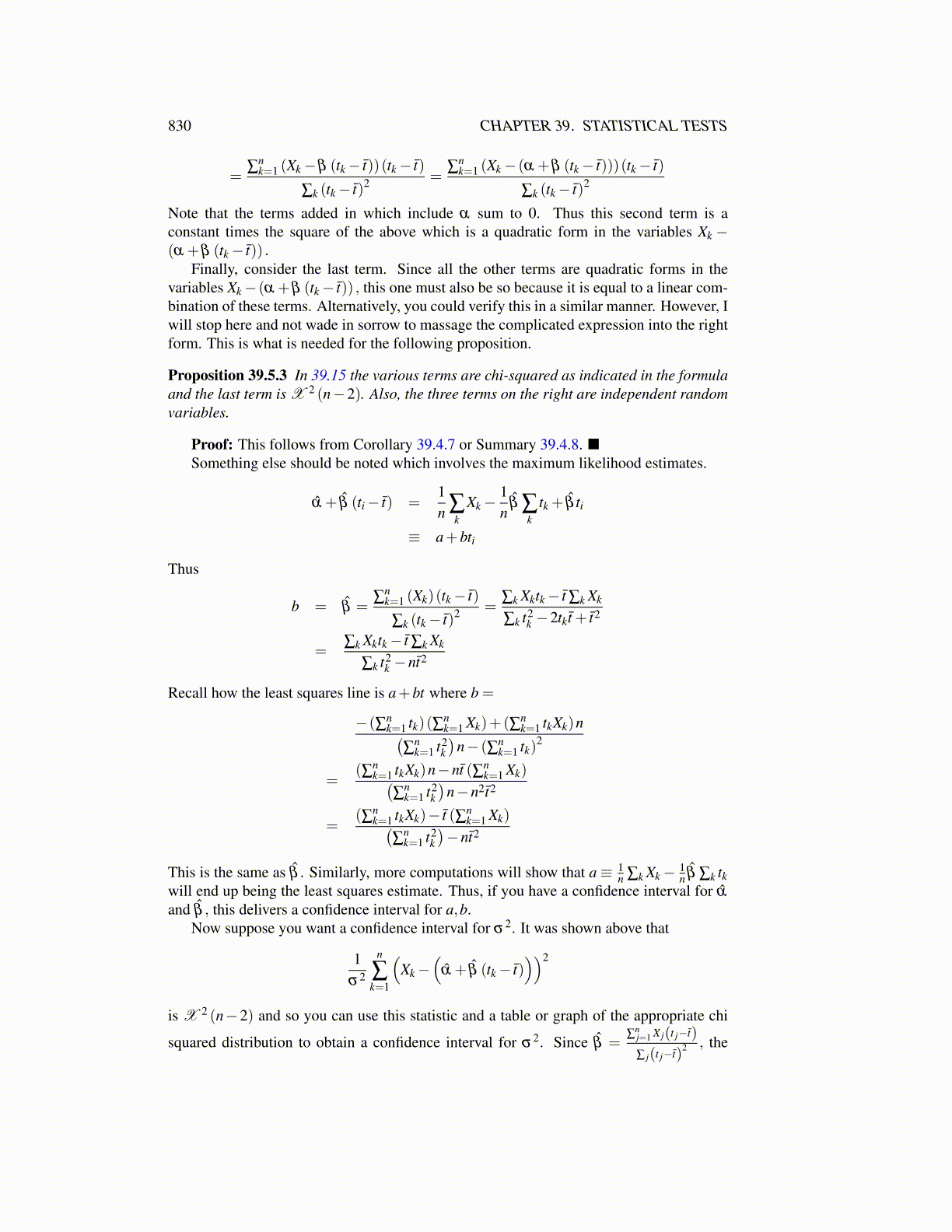
830 CHAPTER 39. STATISTICAL TESTS
=∑
nk=1 (Xk−β (tk− t̄))(tk− t̄)
∑k (tk− t̄)2 =∑
nk=1 (Xk− (α +β (tk− t̄)))(tk− t̄)
∑k (tk− t̄)2
Note that the terms added in which include α sum to 0. Thus this second term is aconstant times the square of the above which is a quadratic form in the variables Xk −(α +β (tk− t̄)) .
Finally, consider the last term. Since all the other terms are quadratic forms in thevariables Xk− (α +β (tk− t̄)) , this one must also be so because it is equal to a linear com-bination of these terms. Alternatively, you could verify this in a similar manner. However, Iwill stop here and not wade in sorrow to massage the complicated expression into the rightform. This is what is needed for the following proposition.
Proposition 39.5.3 In 39.15 the various terms are chi-squared as indicated in the formulaand the last term is X 2 (n−2). Also, the three terms on the right are independent randomvariables.
Proof: This follows from Corollary 39.4.7 or Summary 39.4.8. ■Something else should be noted which involves the maximum likelihood estimates.
α̂ + β̂ (ti− t̄) =1n ∑
kXk−
1n
β̂ ∑k
tk + β̂ ti
≡ a+bti
Thus
b = β̂ =∑
nk=1 (Xk)(tk− t̄)
∑k (tk− t̄)2 =∑k Xktk− t̄ ∑k Xk
∑k t2k −2tkt̄ + t̄2
=∑k Xktk− t̄ ∑k Xk
∑k t2k −nt̄2
Recall how the least squares line is a+bt where b =
−(∑nk=1 tk)(∑n
k=1 Xk)+(∑nk=1 tkXk)n(
∑nk=1 t2
k
)n− (∑n
k=1 tk)2
=(∑n
k=1 tkXk)n−nt̄ (∑nk=1 Xk)(
∑nk=1 t2
k
)n−n2t̄2
=(∑n
k=1 tkXk)− t̄ (∑nk=1 Xk)(
∑nk=1 t2
k
)−nt̄2
This is the same as β̂ . Similarly, more computations will show that a≡ 1n ∑k Xk− 1
n β̂ ∑k tkwill end up being the least squares estimate. Thus, if you have a confidence interval for α̂
and β̂ , this delivers a confidence interval for a,b.Now suppose you want a confidence interval for σ2. It was shown above that
1σ2
n
∑k=1
(Xk−
(α̂ + β̂ (tk− t̄)
))2
is X 2 (n−2) and so you can use this statistic and a table or graph of the appropriate chi
squared distribution to obtain a confidence interval for σ2. Since β̂ =∑
nj=1 X j(t j−t̄)
∑ j(t j−t̄)2 , the